月曜日, 2月 21st, 2011...4:36 PM
Ginza Sankon Part2
Reading time: About 3 minutes
Ginza Sankon Part2Some time ago, I introduced “Ginza Sankon”, a famous dining room of sake and side dishes located in Ginza. In December 2010, it closed down, much to the regret of many sake fans. The master and his wife had worked for 25 years, running their dining room on weekdays and search sake cellars all over Japan for great sake on weekends because they wanted many people to enjoy the real taste of sake. Most of the sake you could drink at Sankon was special kinds which were to be exhibited at competitive shows. With many different kinds of sake, this dining room offered “a variety of tastes” from all over Japan, including the flavor of ginjo (sake brewed at low temperatures from rice grains milled to 60% of weight or less), rice, and other different flavors due to different waters.
In my opinion, Sankon had a determination to have not only good sake but also good fish. If you take a look at the picture of their sashimi, you will see that the sashimi is well ripe. By letting sashimi stand awhile, the flavor mellows deliciously due to an explosive increase of amino acids, causing sashimi to look even tastier.
Sake is, like wine, not an aperitif nor a digestif. Sake is drunk while you are having your meal. It means that you can truly enjoy sake when it is served with good dishes. Good sake makes good dishes even better, and good dishes make good sake better as well. This cycle was truly formed by the master and his wife.
It is much to my regret that it closed down. But I would still like to leave a record of this splendid dining room.
Negitoro (the fatty flesh of tuna minced to a paste and mixed with chopped green leaves of Welsh onions) as an appetizer.
A selection of sashimi of fatty fish in season now.
Sake stored for more than one year is called Koshu (well-aged sake). This sake, Hitoriyogari, is one of these kinds of Koshu. The flavor coming from well ripe sake is absolutely splendid.
Ankimo (Anglerfish liver). The chemistry between sake and ankimo is as good as that between Alsace wine and foie gras.
This was supposed to be jellied conger eel. The one in the picture was a piece not jellied yet. There were some dishes incomplete, just before closing down.
Shirako (milt of fish). With its melt-in-your-mouth softness, I enjoyed having it with momiji oroshi (grated daikon and grated carrot mixed together), chopped green leaves of Welsh onions, and ponzu (bitter or sour orange-based sauce).
Masuizumi. This is daiginjo sake with no added alcohol made from only rice which is processed thoroughly in the way called ginjo tsukuri (brewed at low temperatures from rice grains milled to 50% of weight or less). Its splendid fragrance, sharp taste, and overwhelming flavor absolutely impress the drinker.
Boiled taros tumbled in soy sauce. Very tasty and soothing.
Mackerel dried overnight. When being let stand, fish too become ripe and therefore more delicious like beef and pork.
Male smelts hot and flaky. Very appetizing and just good!
Eiko Fuji. This is also daiginjo sake.
Cod roe. The flavor of the broth is spread over it, and the chemistry with sake is absolutely good.
Soy-flavored omelet for cleansing the palate.
Slices of sea cucumber. They have good crispiness and, like shirako, they go well with momiji oroshi, chopped Welsh onions, and ponzu.
■Related Post
*Ginza Sankon









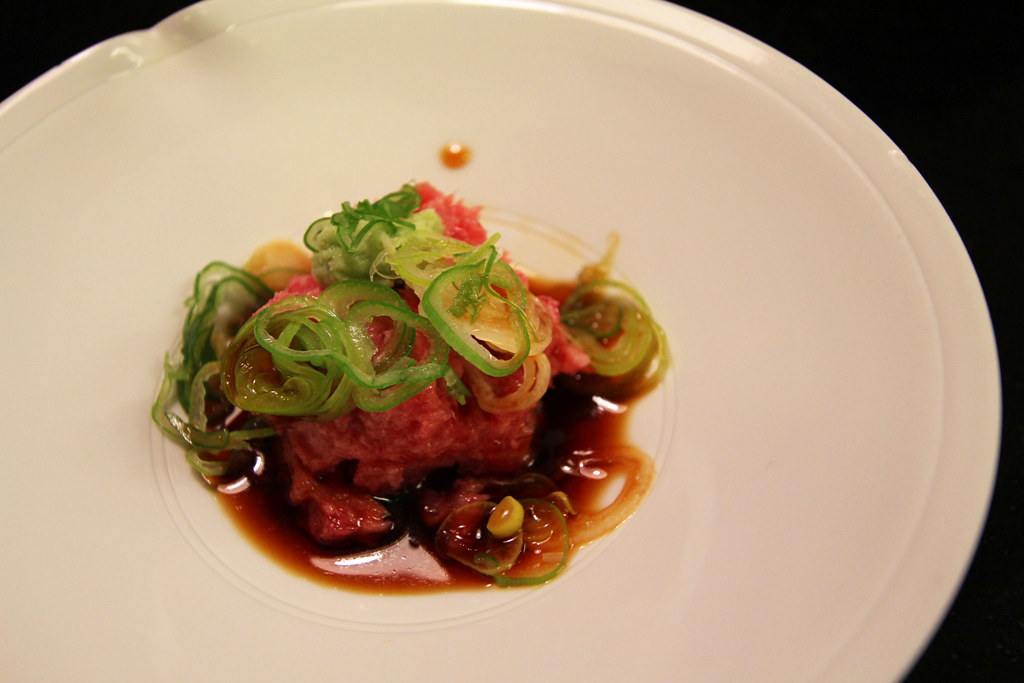

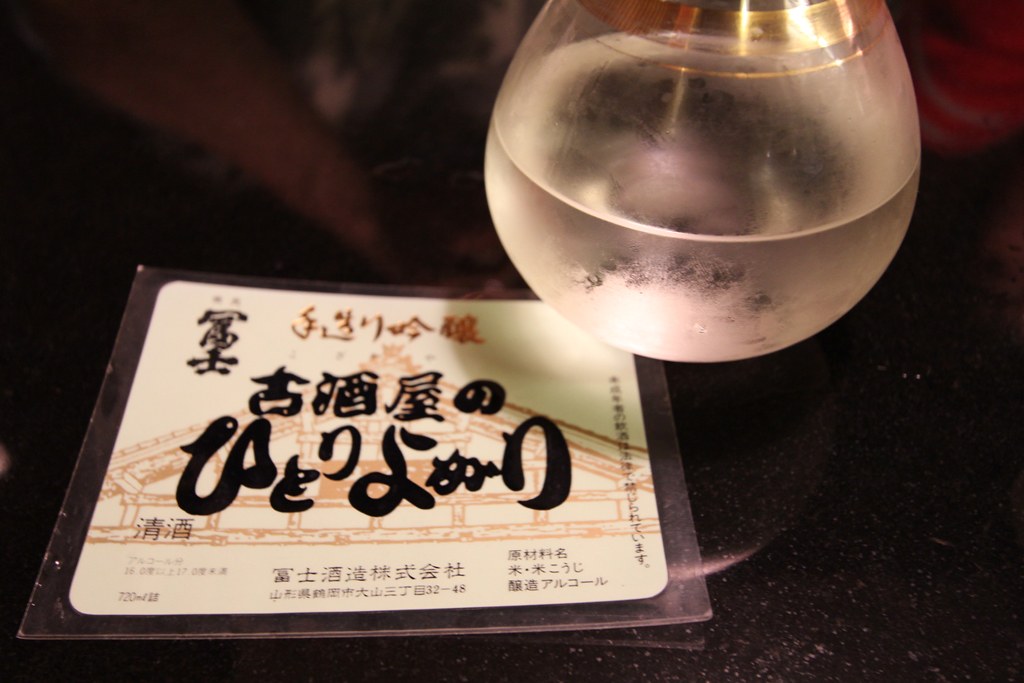
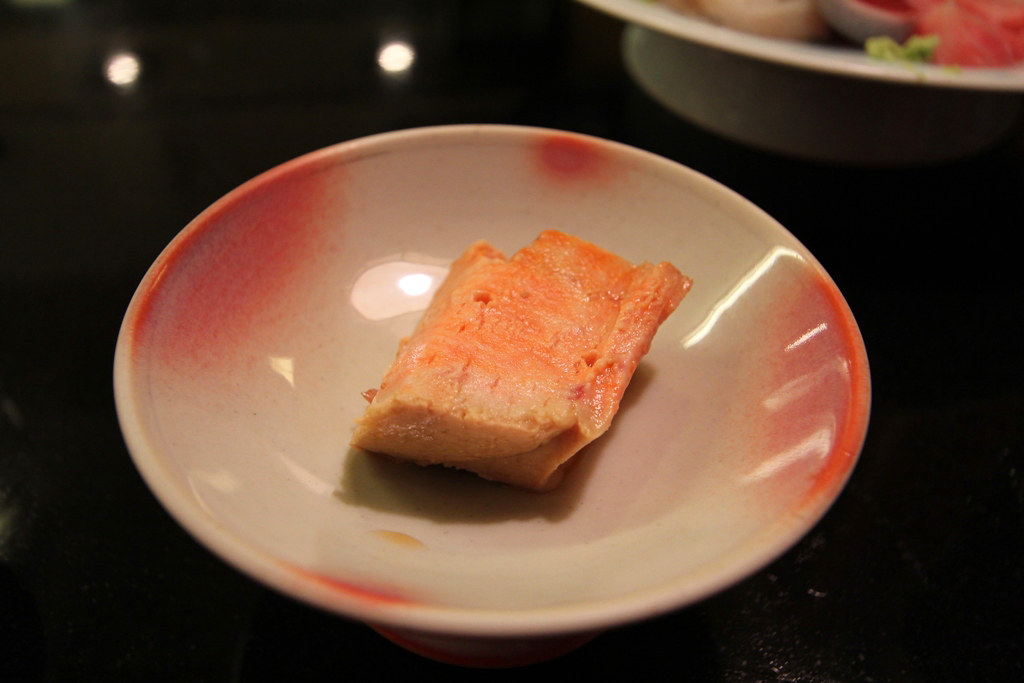

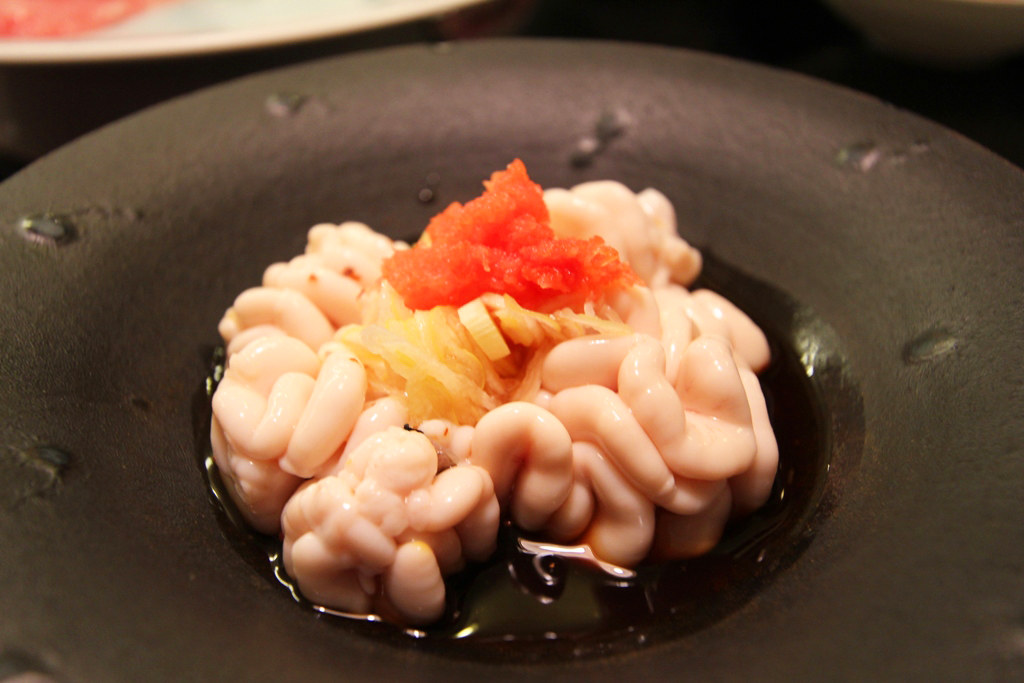
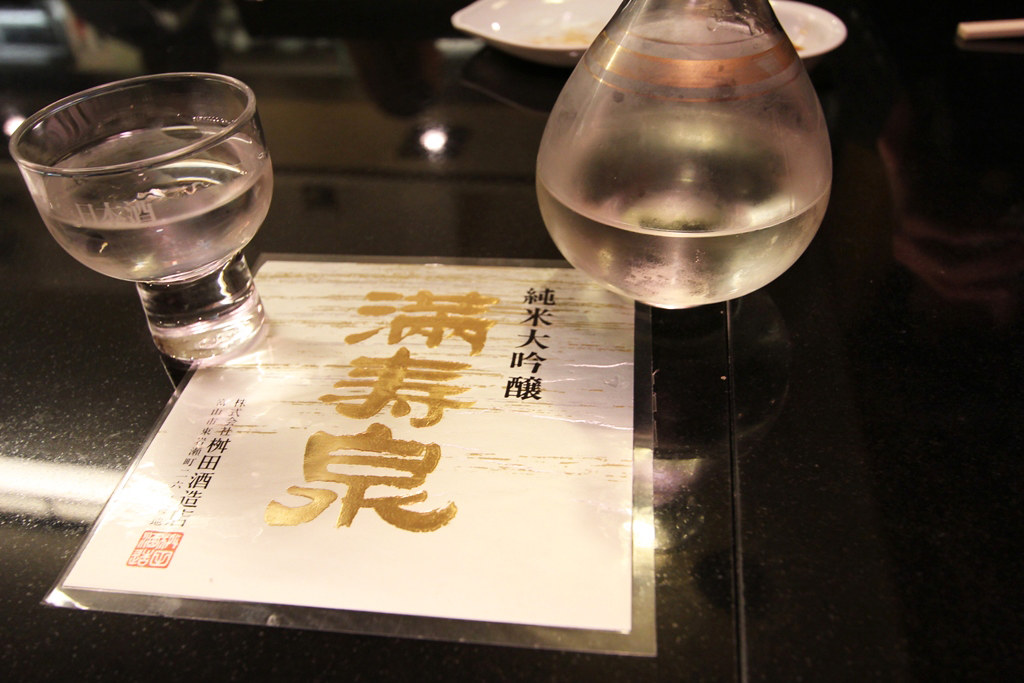
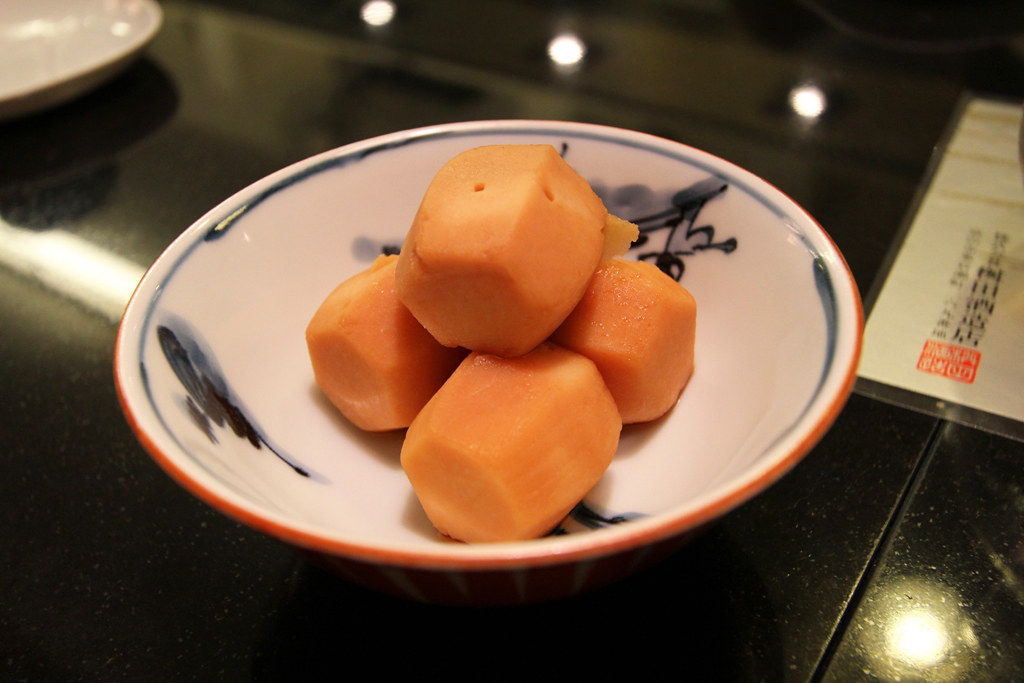


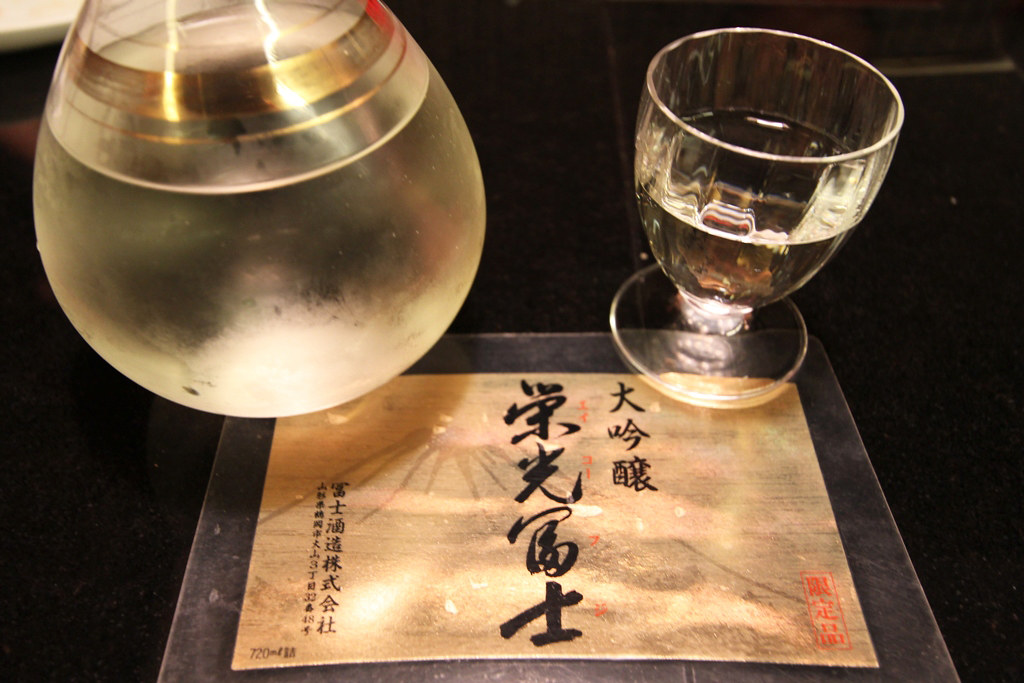
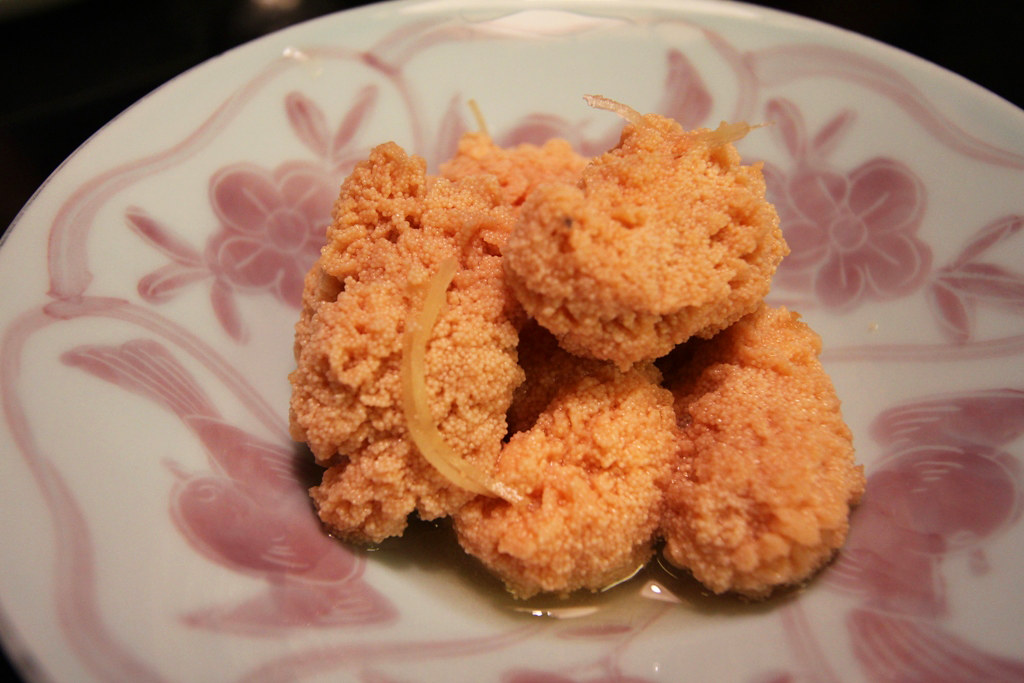

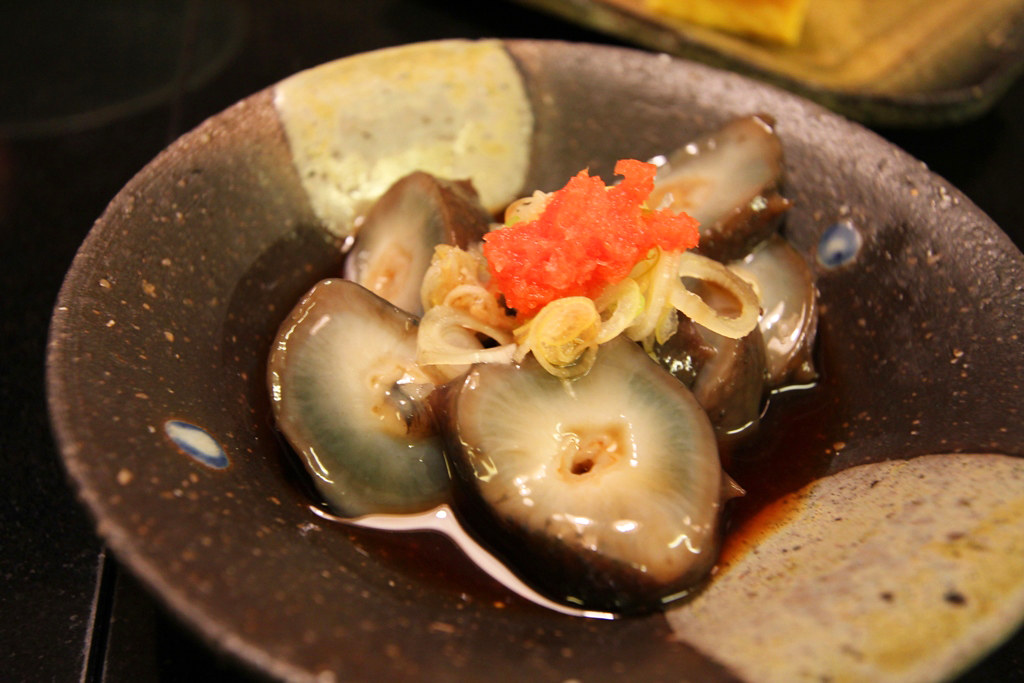











1 Comment
3月 5th, 2012 at 11:59 AM
Can you recommend where else we can have good sake and good food?
Leave a Reply